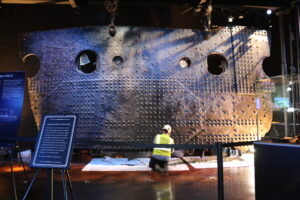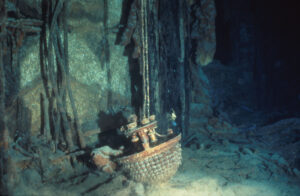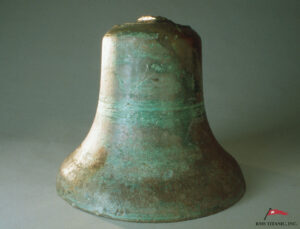RMS Titanic Inc.’s Impact on Titanic Exploration

The RMS Titanic is one of history’s most famous ships. It sank on April 15, 1912, after colliding with an iceberg on its maiden voyage from Southampton to New York City. This tragedy resulted in the loss of 1,496 lives out of the 2,224 passengers and crew. The sinking of the Titanic had a lasting impact on maritime history and safety regulations.
RMS Titanic, Inc. is dedicated to exploring the wreck site of the Titanic and preserving its legacy. They have conducted numerous expeditions to the site, recovering artifacts and documenting its condition. Their work ensures the story of the Titanic continues to be told and studied.
History of Titanic Exploration
The Titanic wreck was discovered in 1985 by a Franco-American expedition led by Jean-Louis Michel and Robert Ballard. This discovery was a pivotal moment in maritime archaeology. Finding the wreck opened new possibilities for exploring and documenting the site.
Exploring the Titanic is crucial for several reasons. It helps us understand the ship’s construction and the events leading to its sinking. Documenting the wreck site also provides valuable information about the effects of deep-sea conditions on sunken ships. This knowledge is vital for maritime preservation efforts.
RMS Titanic, Inc.’s Role in Titanic Exploration
RMS Titanic, Inc. holds exclusive rights as the salvor-in-possession of the Titanic wreck. This legal status, granted by a U.S. federal court in 1994, allows them to recover artifacts from the site. Their mission is to preserve the legacy of the Titanic through research, recovery, and public education.
The goals of RMS Titanic, Inc. include:
- Documenting and preserving the wreck site.
- Recovering and conserving artifacts.
- Educating the public about the Titanic’s history.
- Using advanced technology to study the wreck and its surroundings.
Past Expeditions
RMS Titanic, Inc. has undertaken eight notable Titanic expeditions to the wreck site, each providing valuable insights and uncovering significant artifacts.
- 1987 Expedition: In their inaugural mission, RMS Titanic, Inc. used advanced technology like the manned submersible Nautile to retrieve around 1,800 items. Noteworthy finds included instruments from the stern Docking Bridge, a decorative cherub, and leather pursers’ bags.
- 1993 Expedition: Partnering with IFREMER, the second joint expedition took place in April 1993 using the French research vessel Nadir. The team recovered about 800 artifacts, including the ship’s whistles, a double lifeboat davit, and a two-ton engine eccentric strap. Personal belongings such as a delicate jet bead and a child’s marbles were also discovered.
- 1994 Expedition: Returning with IFREMER, the summer 1994 expedition focused on salvaging personal effects and ship parts. Items like a boot and binoculars were retrieved, and a 17-ton hull section was measured for future retrieval. This section of hull was later displayed at the National Maritime Museum in Greenwich.
- 1996 Expedition: This mission included pioneering scientific studies, using reverse engineering and forensic methods to analyze the ship’s deterioration. Experts from five countries investigated iron-consuming “rusticles” and recovered important artifacts. The Discovery Channel documented this key expedition.
 1998 Expedition: Further scientific exploration during this expedition led to the discovery of new debris fields. Significant finds included the 17-ton hull section known as “The Big Piece.” This mission also made history with the first live fiber-optic broadcast from the ocean floor, allowing real-time exploration of the wreck.
1998 Expedition: Further scientific exploration during this expedition led to the discovery of new debris fields. Significant finds included the 17-ton hull section known as “The Big Piece.” This mission also made history with the first live fiber-optic broadcast from the ocean floor, allowing real-time exploration of the wreck.- 2000 Expedition: Utilizing the Russian research vessel Keldysh and submersibles MIR I and MIR II, the team retrieved key artifacts such as the main wheel and steering stand from the docking bridge. The most remarkable discovery was 65 perfume vials belonging to a first-class passenger. They still retained the scent of Edwardian perfume.
- 2004 Expedition: This mission marked a transition to using remotely operated vehicles (ROVs). Phoenix International’s ROV helped recover unique artifacts like a tile from the Turkish Bath and a gilded wall sconce from the À la Carte Restaurant. This technology enabled continuous operations and careful documentation.
- 2010 Expedition: The most recent mission was the most technologically advanced and conducted in the summer of 2010. The team used innovative techniques to virtually raise the Titanic. This allowed researchers to capture detailed images and data to preserve the ship’s legacy. Leading scientists, oceanographers, and archaeologists came together for this Titanic expedition, which greatly expanded our knowledge of the historical and nautical significance of the Titanic.
2024 Titanic Expedition
 RMS Titanic, Inc. is gearing up for its next significant expedition in July 2024. This will be their first visit to the wreck site since 2010. The 2024 Titanic expedition has several key objectives: imaging, discovery, inspiration, and honoring the legacy.
RMS Titanic, Inc. is gearing up for its next significant expedition in July 2024. This will be their first visit to the wreck site since 2010. The 2024 Titanic expedition has several key objectives: imaging, discovery, inspiration, and honoring the legacy.
The imaging objective aims to digitally record the current condition of the wreck. The team will compare new images with those taken in 2010 to monitor changes. They will also examine how the site is deteriorating, including specific areas like the Marconi Wireless Room.
The discovery aspect involves investigating unexplored sections of the debris field to uncover new artifacts. The team hopes to find marine life that has not been observed before. They will also identify new areas of damage that might provide access to the ship’s interior.
Inspiration is another critical goal of the 2024 expedition. RMS Titanic, Inc. plans to engage the global community in identifying artifacts for future recovery. They will share the wreck site with the public through exhibitions, classrooms, and interactive experiences. By showcasing the excitement and importance of deep-sea exploration, they hope to encourage young people to pursue careers in oceanography, history, and related fields.
Honoring the legacy of the Titanic is also a priority. The team will recognize the contributions of key individuals, such as P.H. Nargeolet, who have significantly advanced Titanic research. They will continue the meticulous work of recovering and preserving artifacts to maintain the historical integrity of the site.
The 2024 expedition will utilize advanced technologies, including high-resolution photography and remotely operated vehicles (ROVs). These tools will help the team document the site in unprecedented detail and conduct thorough explorations. Key team members include experienced professionals in deep-sea exploration, marine biology, and archaeological conservation. Their expertise will be crucial in achieving the expedition’s objectives and contributing to our understanding of the Titanic’s historical and maritime significance.
Public Engagement and Education

RMS Titanic, Inc. uses recovered artifacts to educate the public about the Titanic’s history. Their exhibitions, both touring and permanent, have been viewed by millions of people worldwide. These displays allow visitors to connect with the Titanic’s story in a tangible way.
The company incorporates recovered artifacts into educational programs focused on STEAM (Science, Technology, Engineering, Arts, and Mathematics). These programs offer valuable lessons and motivate students to delve deeper into history and science. Titanic exploration greatly influences public interest and historical education, ensuring that the Titanic’s legacy endures for future generations.
Follow RMS Titanic Inc. Today for More on Their 2024 Titanic Expedition
Titanic exploration plays a crucial role in preserving the ship’s legacy. RMS Titanic, Inc. leads these efforts through their dedicated research, artifact recovery, and educational initiatives. The 2024 expedition promises to provide new insights into the condition of the wreck and support ongoing preservation efforts.
By staying updated and engaged, everyone can contribute to preserving the memory of the Titanic and its passengers. The efforts of RMS Titanic, Inc. ensure that this significant history continues to be remembered and explored for years to come.
Follow RMS Titanic, Inc. on social media and visit their website for the latest updates on the Titanic Expedition 2024. You can support their mission by making a donation, becoming a member, or attending their exhibitions. Your participation helps protect the Titanic’s legacy for future generations.
